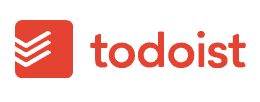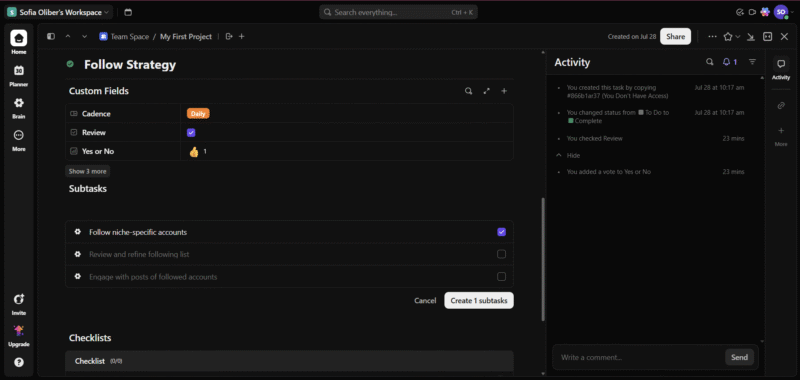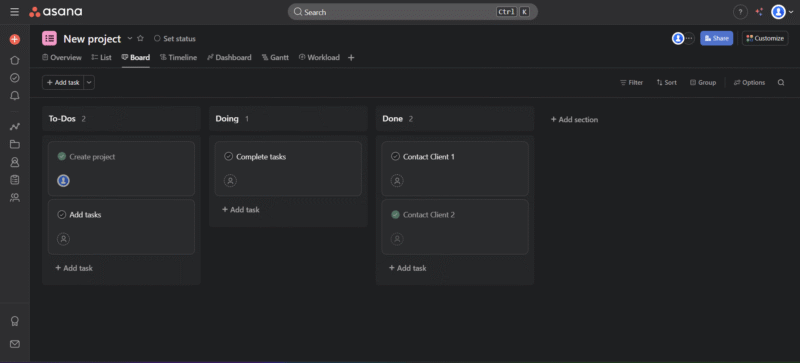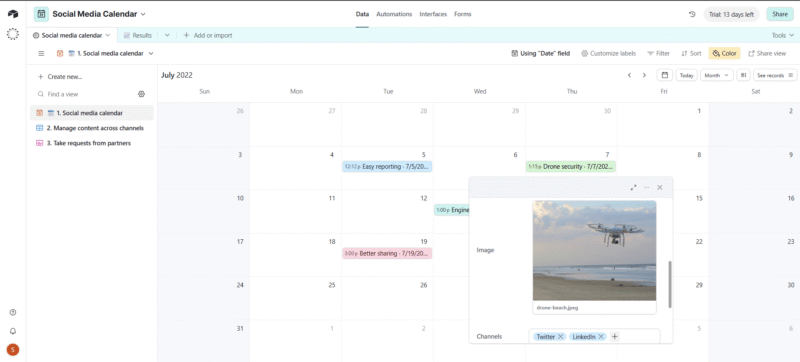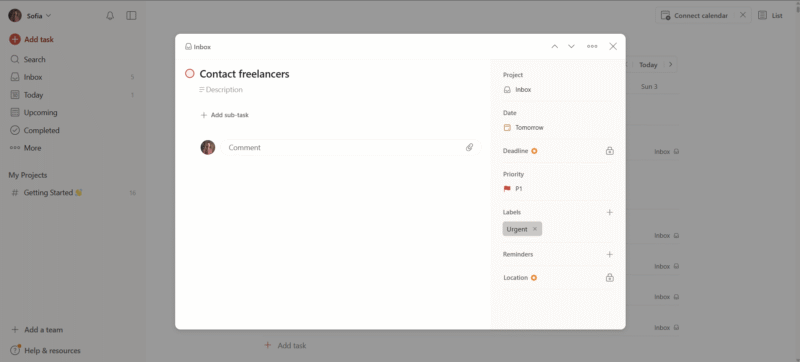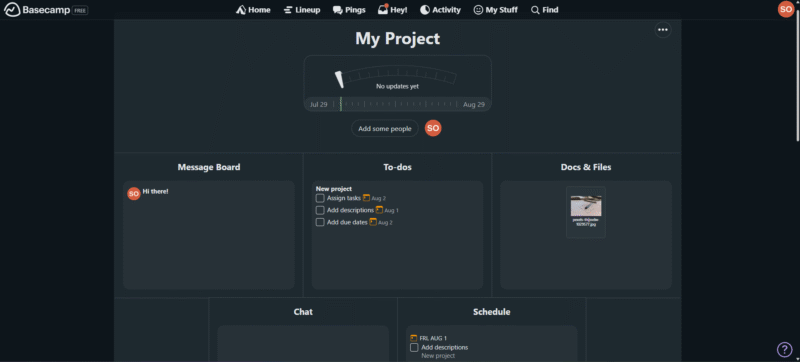The 7 Best Project Management Software for Solopreneurs: Key Features, Pricing, Pros & Cons Compared
Running a business alone doesn’t mean forgetting about efficiency. Read on to learn about the best project management software for solopreneurs to stay organized and in control.
Solopreneurs understand the hustle of managing many different duties at the same time. They usually perform tasks that go from budgeting to content creation to client management. Over time, this pivoting of work can become exhausting to manage. That’s where the best project management software for solopreneurs can save the day.
Management tools can help any solo business owner stay organized and productive while taking some of the burden off their shoulders. Features like automations, templates and automatic reports can make a significant difference in a solopreneur’s daily routine.
If you want to stop being an octopus worker juggling endless tasks on your own, this guide is for you. Unlike our general roundup of the best project management tools, here we’ve ranked the best options based on what most solopreneurs need. Once you understand how these tools function and get them working for you, it’ll feel like having a personal assistant.
Cloudwards’ Choice: ClickUp
Our Methodology: How We Tested Our Favorite Project Management Tools for Solopreneurs
When choosing the right project management tools for solopreneurs, we kept their needs in mind and focused on simplicity, speed, price and overall routine optimization. Solopreneurs might not be managing big teams, but they are dealing with a lot of tasks alone. This is exactly why usability and efficiency mattered the most when making our decisions.
Avoid Costly Project Management Mistakes – Get Free Tips Today!
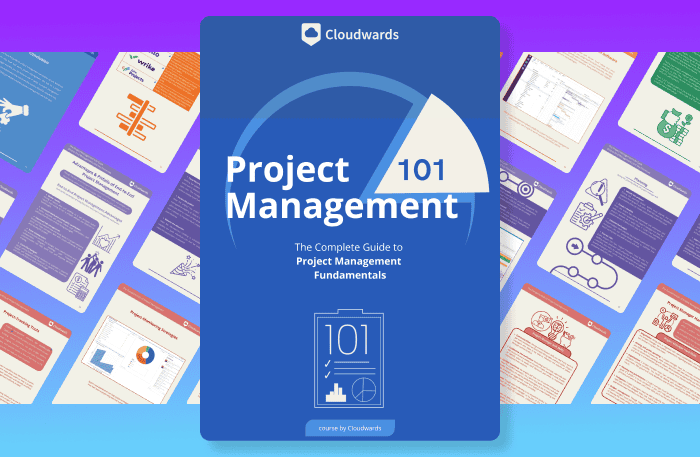
- Discover 10 fundamentals of project management
- Understand step-by-step plans for PM execution
- Learn tips to avoid 5 common mistakes by beginners
- Ease of use: We searched for intuitive designs that could handle everything a solopreneur needs in one place while still being comprehensible.
- Task management: Each tool needs to be able to handle at least basic tasks and project management. In the end, the main goal is for solopreneurs to be able to manage their workload easily.
- Advanced project management tools: More complex features like effective views, drag-and-drop functionalities, automations and time tracking influenced our choice of services.
- Value for money: Many tools offer great free and starter plans. Other plans can be a bit more expensive but include more robust features that may be worth the investment. It depends on each solopreneur’s priorities, but we looked for tools that offer good value for money.
The 7 Best Organizational Tools for a Solo Entrepreneur Compared
1. ClickUp — Best Project Management Tool for Growing Solopreneurs
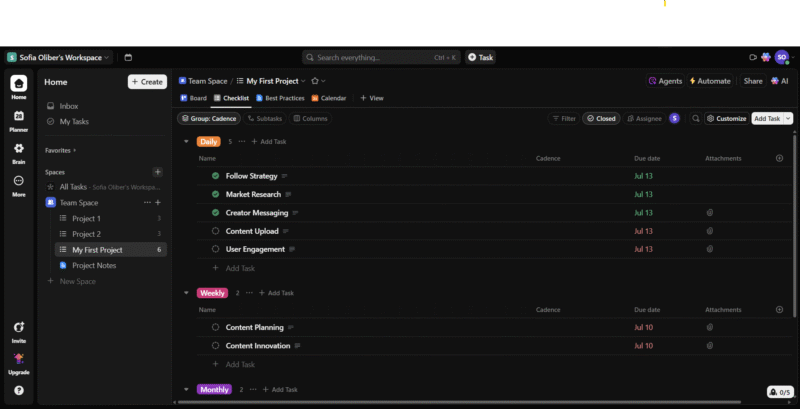
ClickUp is a good solution for entrepreneurs in search of a complete yet intuitive software solution. Within the ClickUp platform, users can find lists, tables, documents, goals and dashboards. It’s competent enough to help you plan an entire business sales pipeline and expand it later. Plus, the templates, task assignment options and dashboards are ideal for maximizing productivity.
For example, a competitive freelance designer can use ClickUp to manage projects and client requests, set up weekly sprints, track hours spent on each project, and monitor changes and edits.
ClickUp Key Features for Solopreneurs:
- Multiple views: Different views are always handy when it comes to project management, as they allow you to visualize your project in different ways for multiple insights. ClickUp includes more than 15 view options.
- Goal tracking and dashboards: ClickUp lets you set measurable goals and even connect tasks to them. The dashboard view is one way to ensure goals remain visible.
- Good AI assistant: ClickUp’s AI assistant helps with summarizing tasks, writing documents or prompts and even responding to messages.
ClickUp Pricing & Value
The free plan is solid for solopreneurs, as it includes unlimited tasks and members. However, the best deal is the Unlimited plan, which starts at $7 per month per user — with no minimum users — and adds features like more integrations with third-party apps and more than 1,000 automations.
The higher tiers are Business and Enterprise, which unlock more advanced reporting and admin tools that solopreneurs probably won’t need unless they’re planning to bring on a team. To learn more about the service, read our ClickUp review or try any of its plans yourself. You can also count on the 30-day money-back guarantee if it’s not the right fit.
- Basic functionality with some limitations
- All prices per user
- All prices per user
2. Trello — Best Project Management Tool for Visual Users
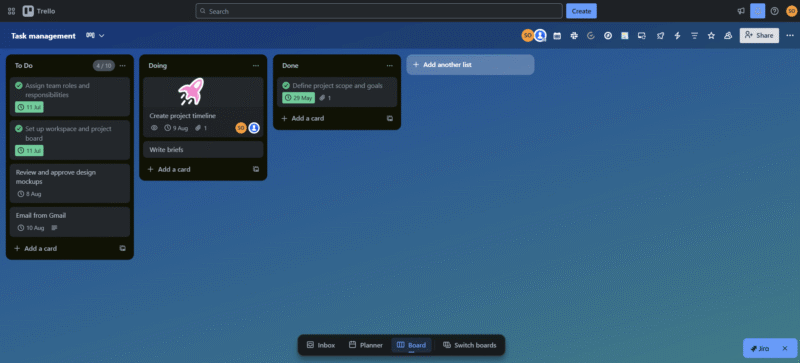
If Trello is anything, it’s “easy” and “visual.” Trello’s kanban board system makes it one of the simplest project management platforms available. You can easily get the hang of it in a matter of minutes or hours, and its drag-and-drop functionalities make it very user-friendly.
Additionally, the platform is highly customizable and scalable thanks to its extensive and free power-up menu. If you feel like you’re missing a feature while using Trello, give the power-up menu a look — you might find the answer you need.
Trello Key Features for Solopreneurs:
- Kanban boards: This Agile project management tool is designed to streamline project management. It’s perfect for personal projects and solopreneurs.
- Customizable lists and cards: If you are organized and have a clear idea of your project’s goal, Trello’s simplicity is an ally. You can edit and use lists and cards for more than just the “to do” and “done” columns.
- Automation tool: Trello allows users to automate repetitive and daily tasks with its automation tool, called Butler.
Trello Pricing & Value
Unlike other project management tools, Trello offers a solid free plan for beginners, with unlimited cards and power-ups. The Premium plan is the perfect balance of simplicity and functionality for solopreneurs. For $10 per month, you get advanced features such as more views and workspace-level templates. You can learn more in our full Trello review, or try any plan to get started.
- Unlimited users, 10 boards, Unlimited power-ups, Unlimited storage
- Price is per user, Unlimited boards, Custom fields, Invite guests
- Price is per user, Several new views
- Price is per user, Advanced admin & security settings. Discounts for larger teams.
3. Asana — Best Project Management Tool for Structured Processes

Love for Asana comes from realizing how easy it is to structure projects with this tool. Users can break down their projects into sections, tasks and subtasks while visualizing their workflow with different views. This system is ideal when running multiple projects and subtasks at once — a workflow to which solopreneurs are no strangers.
Pre-built templates and automation features are also handy for saving valuable time. Solo business owners such as designers or developers managing complex clients with big deliverables and multi-step projects can truly benefit from Asana’s interface. Although Asana’s free plan is limited, it still offers amazing value, making it one of the best free project management tools.
Asana Key Features for Solopreneurs:
- Task hierarchies: Asana makes managing tasks and subtasks for a simple project foolproof. Additionally, you can group them under your project goals.
- Project permissions: Even if you work alone, you might need to share your boards or projects with clients. With Asana, you can set project, task or team permissions.
- Integrations: The tool lets you seamlessly integrate third-party apps like Slack, Gmail and Zoom.
Asana Pricing & Value
Asana offers an excellent free option for individuals and small teams. If you want more advanced features, its best deal is the Starter plan, which costs $10.99 per month per user and adds automations, milestones and timeline views. The Advanced plan has a big jump in price and includes advanced tools like reporting and admin tools that solopreneurs likely won’t need.
Read our Asana review to learn more about specific differences between plan options. You can try any of the paid plans with the generous 30-day free trial.
- Up to 10 users
- Price is per user. unlimited users, expanded features
- Price is per user. unlimited users, even more features
- Custom pricing, advanced security features
4. Airtable — Best Project Management Tool for Data-Abundant Projects
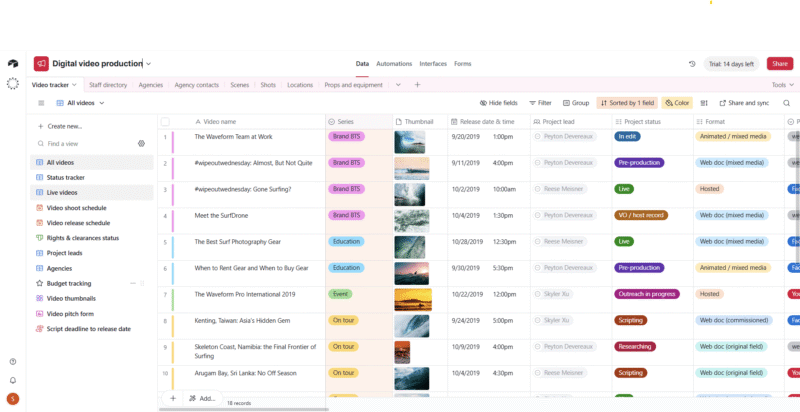
If a database and a spreadsheet had a baby, it would be Airtable. This software can come in super handy when organizing complex information and projects that change over time.
However, if you are not a fan of spreadsheets, you might find its interface a bit overwhelming.
A marketing manager trying to launch an online course could use Airtable for many purposes. They could track important tasks and monitor progress in the grid view, manage content in the gallery view and oversee the general project in the calendar timeline. Airtable can bring many perspectives to a single project.
Airtable Key Features for Solopreneurs:
- Multiple views: You can switch between grid, calendar, gallery, kanban and timeline views. This is ideal for solopreneurs who want to visualize their workflow in a specific style.
- Custom fields: Unlike regular sheets, Airtable lets you deeply customize its fields and create attachments, checkboxes and many other fields.
- Professional templates: Airtable offers a vast template library with comprehensive and ready-to-go options, such as product trackers and budget management templates.
Airtable Pricing & Value
Airtable’s free option offers unlimited bases and 1,000 records, which are items within a board. The Team plan offers the best value, at $20 per month, and includes a Gantt chart view and 50,000 records per base. The Business and Enterprise plans involve a huge jump in price and may be too much for a solopreneur in need of something simpler.
You can give Airtable a chance with its 14-day free trial, or read our full Airtable review to learn more about its features.
- Up to five users. Unlimited bases. 1,000 records, 1GB of storage per base. Revision and snapshot history for two weeks. Views: grid, calendar, form, Kanban board, gallery and list. 100 automations per month.
- Everything in free, plus unlimited users, 50,000 records and 20GB of storage space per base. Adds Gantt charts and timeline views. 25,000 automations per month.
- Everything in Team, plus 125,000 records, 100GB of storage per base, 100,000 automation per month. Admin controls, single sign-on (SSO) and premium integrations with third-party services.
- Everything in Business, plus 500,000 records, 1TB of storage per base, and 500,000 automation monthly.
5. Todoist — Best Project Management Tool for Proactive Workflows
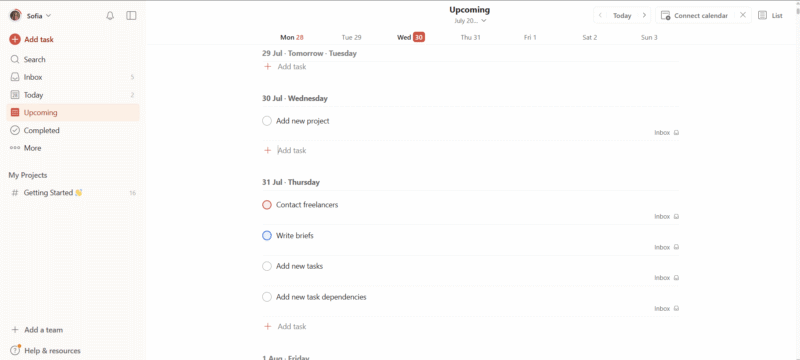
Despite including powerful features like automations and reminders, Todoist is truly more of a task management tool than a project management tool. It’s perfect for solopreneurs who want to get work done without distraction and maintain a minimalist visual approach to their to-dos. The platform allows users to organize tasks with priorities, tags and schedules.
At its core, Todoist is a great tool for managing routines and creating habits. Let’s say you have a newsletter. Todoist makes it easy to break down repetitive tasks like “do the research,” “write the newsletter” and “schedule send,” while automatically assigning them to your weekly or monthly workflow.
Todoist Key Features for Solopreneurs:
- Task priorities: You can use colors and tags to prioritize and filter tasks.
- Calendar view: Solopreneurs with many due dates will find this view handy, though it’s available only on the Pro and Business plans.
- Recurring tasks: You can set due dates and times for tasks to repeat automatically, similar to what you’d do with your usual calendar tool.
Todoist Pricing & Value
Todoist’s free plan includes five active projects, as well as basic filters and automations. The Pro plan is the best option, as it unlocks custom task reminders, deadlines and an AI assistant for just $4 per month.
Todoist is one of the most affordable tools out there. Check out our full Todoist review to learn more about it.
- 1 main user 5 active projects 5 collaborators (per project) 5MB file uploads
- 1 main user 300 active projects 25 collaborators (per project) 100MB file uploads
- Multiple users, (price is per user) 500 active projects (per member) 50 people (per project)
6. Basecamp — Best Project Management Tool for Managing Multiple Clients
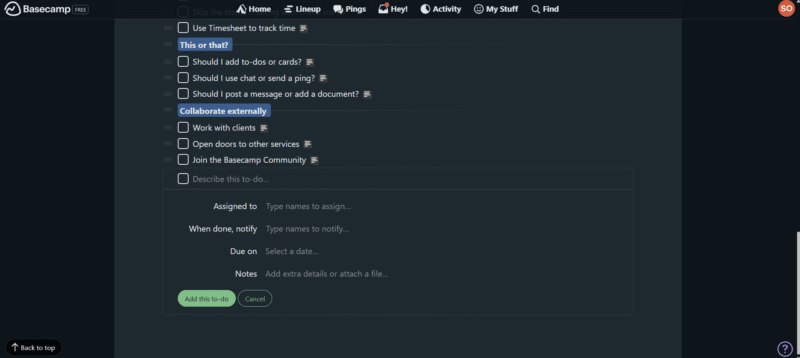
[provider teaser block]
Basecamp’s interface feels very different from the rest of the project management tools on this list — it acts more like an online workspace where users can handle parts of a project separately. It’s great for entrepreneurs who need a platform to complete client work, share files, track progress and communicate efficiently.
On a paid plan, you can create a separate project for each client and even dedicate a space for elements like messages, documents and task lists. Basecamp also has a group chat option that could work as an alternative to email messaging or Slack, making it perfect for more centralized communication.
Basecamp Key Features for Solopreneurs:
- Message options: Some of Basecamp’s most popular features are its robust communication tools, including message boards, real-time chat and private pings.
- Simple to-do lists: You can also access kanban-style card boards and simple to-do lists to visually track your project progress.
- Document and file hub: Every project has a dedicated space to upload documents and files, which can be sorted by date or folder, or manually reordered.
Basecamp Pricing & Value
Basecamp’s pricing includes a per-month and a flat-rate option. There’s also a free alternative that supports one project and 1GB of storage. When considering value for money, Basecamp Plus is the best option for individuals, at $15 per month.
You can try Basecamp Plus free for 30 days, or learn more about this innovative tool in our comprehensive Basecamp review.
- One project 1 GB storage space
- Per user. Unlimited projects, Unlimited users, All features. 500GB storage.
- Unlimited users. 5TB storage. Priority support.
7. Google Workspace — Best Collaboration Tool for Simple Projects

Though not strictly a project management tool, Google Workspace can be used to manage simple tasks and projects. The service comes with a host of apps, cloud storage and even web hosting with a domain for your business. It is also great for collaborating, storing all your data and managing documents.
A freelancer could divide clients’ deliverables into different shared folders while managing their personal task flow in another project management software like Trello or Asana.
Because Workspace encompasses many Google services, such as Google Drive, Gmail and Google Calendar, Workspace can be a useful central hub. Plus, once you feel ready, you can integrate your Google account with most popular project management apps on the market.
Google Workspace Key Features for Solopreneurs:
- Real-time collaboration: You can work with your clients or external collaborators on the same document in real time and check the document history if you need to know who made each change.
- AI Options: Google Workspace embeds AI across its app via Gemini, allowing users to summarize, draft, create content and more.
- Search using optical character recognition (OCR): Searching within Google documents is easy, as you can find them by content, not just by title. It also indexes PDFs and images and is capable of reading them.
Some people might think that Google Workspace only includes Google Drive functionalities for storing photos or creating documents, but it’s actually quite a comprehensive tool. If used smartly, Google Workspace can assist in creating presentations for clients, setting up spreadsheets for budgeting, managing files and advanced options like hosting your brand’s domain.
Google Workspace is naturally not built to track tasks or project goals, but it works perfectly as part of a larger infrastructure. Collaboration is where Google Workspace shines, as options like co-editing documents in real time, assigning action items and receiving notifications make it much more valuable than a simple text or spreadsheet processor.
Google Workspace Pricing & Value
Google Workspace Essentials is the 15GB free plan, but if you’re a solopreneur handling many files, you can try its paid options for 14 days with its free trial. Paid plans start at an affordable $7 per user per month with the Starter plan, which includes 30GB of pooled storage, custom business email, Meet, and AI tools.
To learn more about what this tool can do for you, read our Google Workspace review or try Essentials for free.
- 15GB
- per user / month, 1 year commitment
- 30GB
- per user / month, 1 year commitment
- 2TB
More plans
- *100TB shared across all users
- 100TB
- per user / month, 1 year commitment
- 5TB
Why You Need Solopreneur Tools for Project Management
Solopreneurs need reliable and efficient structures to manage their many responsibilities. It’s easy to get overwhelmed or forget about important tasks when working in chaos. Project management tools can help solo business owners stay organized, focused and productive.
- Better time management: The difference between going over a scattered to-do list and having a competent software that can alert you to due dates, time tracking and progress while structuring workflows is like night and day.
- Centralized control: Having too many projects in different places is not a good idea and could lead to wasted energy. Having everything in one place means less mental fuzz and better big-picture organization.
- Improved goals: Project management tools let users focus more on project management methodologies and measurable tasks. It’s easier to grow when you have a series of small steps to follow instead of just one big goal.
- Client communication: Many of these tools have great communication features that can help users avoid back-and-forth emailing. Having shared projects or visible timelines is helpful for both solopreneurs and their clients.
Final Thoughts
The right project management software can not only assist solopreneurs with organization and task management but also make the whole process more efficient by saving time. As a solopreneur, you might find the learning curve tough with new software, but you will gain a lasting advantage if you push through.
There is no such thing as a perfect project management platform. Some have visual interfaces, like Trello, while some are highly customizable and feel like a perfect mix of it all, like ClickUp. Most have free trials and money-back guarantees. Try a few out — you could even end up using more than one.
Which tools resonated with you the most? Have you tried any of them before? Are you considering trying any in particular? Leave your thoughts in the comment section. Thanks for reading.
FAQ: Best Solo Entrepreneur Tools
ClickUp is the best project management tool for solopreneurs, as it includes advanced features and an intuitive interface. Other great tools for solopreneurs are Trello and Asana.
The best project management software for freelancers is Trello due to its simplicity and ease of use. Its user-friendly interface makes it a great tool for individuals and small teams who need quick solutions in just a few clicks.
Yes, Asana is good for solopreneurs thanks to its comprehensive interface, task hierarchy and management features. Other great project management tools for entrepreneurs are Trello, ClickUp and Airtable.





